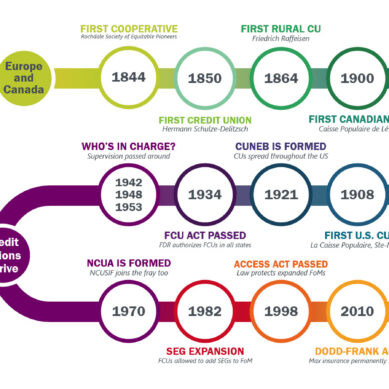The decision to change a core data processing vendor or undergo a “data processing conversion” is one of the most significant business decisions a credit union can make. As you embark on this major milestone, it is important to note key factors that will undoubtedly have a major impact on the success of your transition: dedication, cooperation, and communication.
Dedication, cooperation, and a little trust
The successful outcome of your core conversion process will rely heavily on your team’s dedication to the process and the teamwork between your team and your chosen vendor’s project team. Most data processing partners will have a standardized process they will guide you through. Trust. Their. Process. Keeping in mind it is most likely honed over many years of experience and hundreds of project implementations.
Their job is to lead the dance that consists of crucial steps such as the data conversion, training and education, and third-party vendor coordination. Create an internal team to dedicate to the project and encourage cooperation with your new partner. I’m not suggesting just following blindly, but have a little faith in their process and work with instead of against them – you’re all on the same team with the same goal.
The ideal credit union project team would represent all areas of the organization and contain individuals who are knowledgeable about the current software and integrations as well as from the member service perspective. Cooperation in the form of responsiveness and prompt completion of requested tasks is always appreciated. While it may always seem like you have plenty of time to get tasks done, procrastination can kill all good intentions, so act quickly.
Communication, communication, and yes, more communication
The importance of communication in this process cannot be emphasized enough. Dare I say the most critical element attributed to a successful core conversion. Determining your preferred method of interaction (written, verbal, etc.) and agreeing to the best means suited to all parties should be established early on. There will be frequent and sometimes intense interactions between your credit union, your current data processor, third-party vendors, and your new data processing partner.
Yes, you read that correctly, you still need to communicate with your current data processor. Don’t make the mistake of thinking that because you are deconverting that you can cut them out of the process. It is not uncommon to experience “sticker shock” from the deconversion pricing some vendors charge, and although it may be tempting to burn that bridge, you will almost always need their cooperation in some aspect. It may also be appealing to save money and forgo obtaining data and support from them, but keep in mind that there is great value in factors such as standard, consistent data formats, supplemental documentation, and their knowledge of their data for support purposes. These things really should not be discounted when considering overall costs.
Keep your members informed
In addition to project team related communications, communicating internally with all credit union team members and externally with your members is equally important. A core conversion brings forth many changes which naturally creates uncertainty; clear, open communication is the best way to combat this. Keep them apprised of what is changing, when it is changing, and what is expected of them. Avoid using the term “conversion” and instead refer to this as an upgrade. Reassure them with reminders of what is staying the same and take the opportunity to convey all the positive new features and services this upgrade will bring. After all, you are doing this for them. Create an “upgrade page” on your website and keep it updated with your progress and tools (videos etc.) to promote some of the new bells and whistles. Communicate, communicate, communicate!
So, if you’re considering a core data processing vendor change or have one already underway, use these helpful tips to avoid some common pitfalls and facilitate a smooth transition. Dedicate the resources, cooperate with your project leaders, and communicate frequently and consistently with everyone.
























































